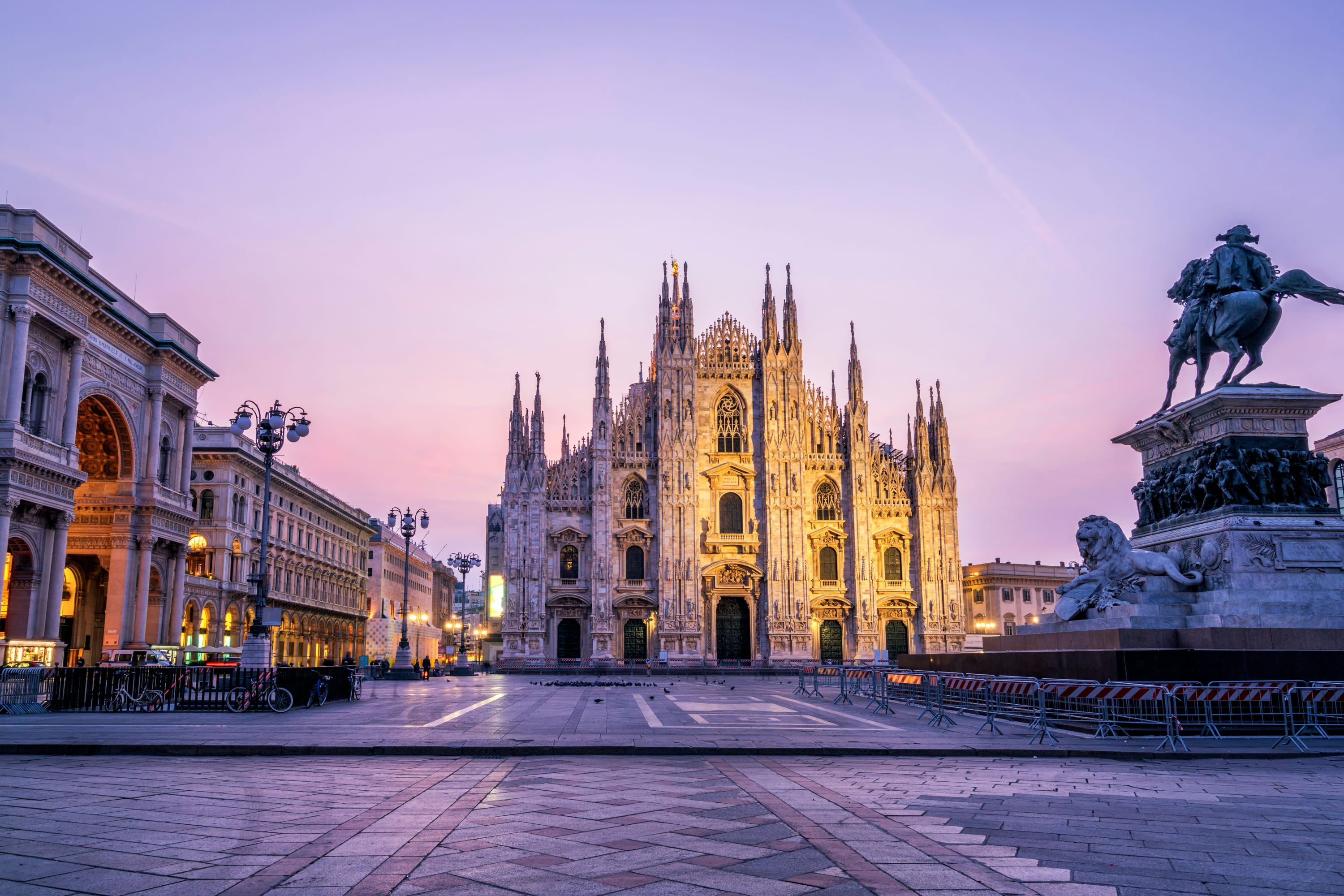
Italy’s most stylish metropolis offers plenty for every traveler, from admiring stunning architecture and iconic art to sampling exceptional cuisine. It’s a mecca of fashion and design, with everything from luxury flagship stores to trendy boutiques. Below, Fora travel advisors share their top picks for what to do in Milan, with insights from their firsthand experiences in this fashion-forward Italian city.
Fora regularly sponsors trips for travel advisors who’ve met certain criteria, so they can familiarize themselves with a destination’s offerings and better serve their clients. In October 2024, a team of advisors visited Milan, staying at a few of the city’s top hotels and exploring the best sites.
“Milan is perfect for learning, exploring, shopping…and more shopping,” Fora Advisor Ashley Emala said.
The city, one of the best places to stay in Italy, has an energy to it that makes it unique among cities in Italy. The Milan itinerary below is based on the scouting team’s experiences, with additional insights provided by Fora Advisors who have previously visited (or live in) the city.
Plan your trip with a Fora Advisor for insider tips tailored to your interests. And if you need help deciding where to stay in Milan, your advisor can break down your options — per your budget and preferences — and unlock complimentary VIP perks at partner properties across the city.
Day 1: Brera and Quadrilatero d’Oro
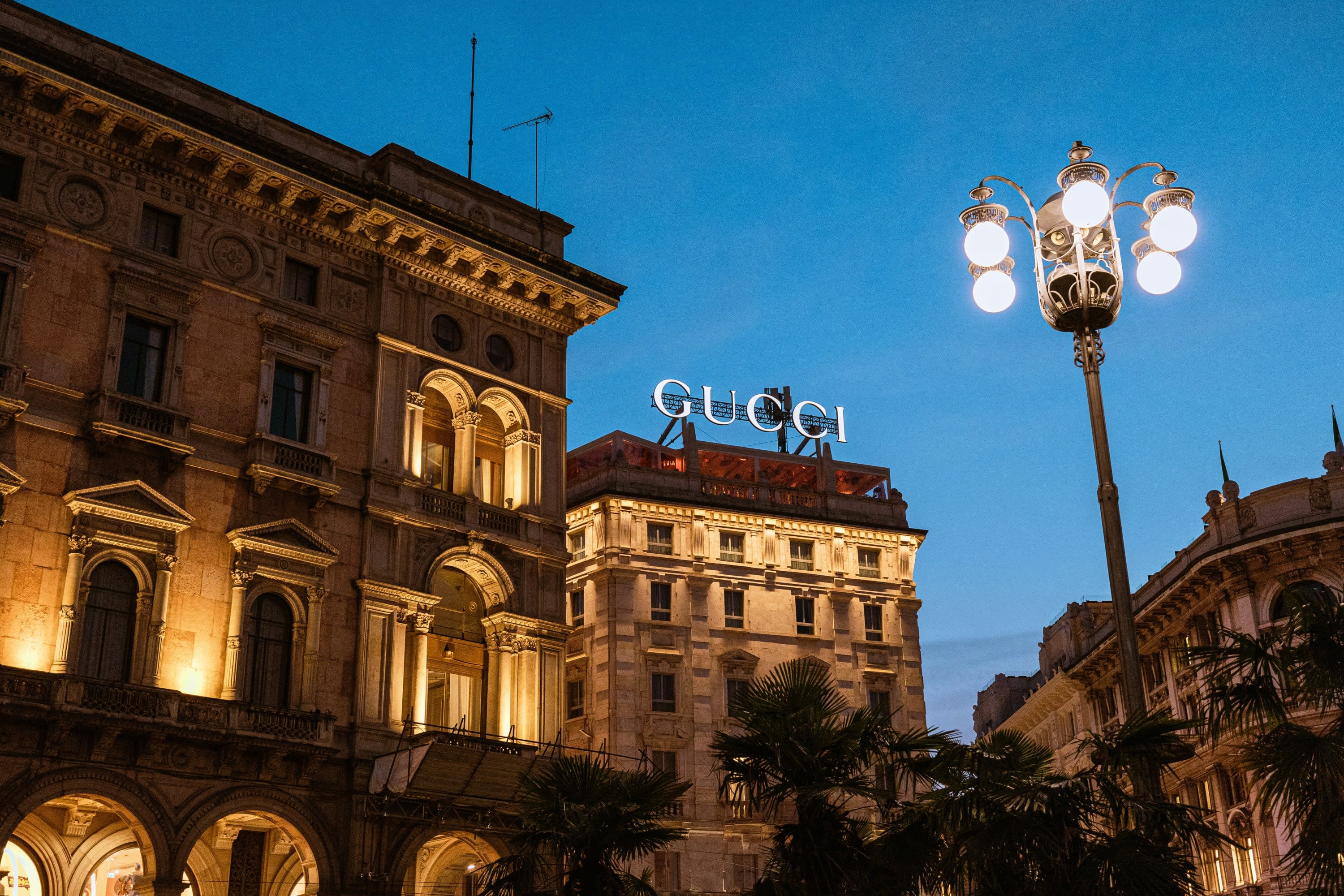
The Fora team started their time in Milan by exploring the city’s top shopping districts, Brera and Quadiltatero d’Oro, the latter of which translates to “Golden Quadrilateral,” a reference to the neighborhood’s upscale aesthetic. “Brera is widely regarded as Milan's chicest neighborhood,” Fora Advisor Courntey Jewell said.
The neighborhood has a historic ambiance and a bohemian spirit cultivated by artistic roots. The Pinacoteca di Brera, a prestigious art gallery featuring works by Italian masters, is a highlight — as are Brera’s cafés, artisanal boutiques and art studios. Brera’s cobblestone streets and green courtyards make for the best leisurely strolls, with many spots for people-watching and dining al fresco. The area is especially lively in the evening, as locals and travelers gather to enjoy the neighborhood’s vibrant nightlife.
Quadrilatero d'Oro is Milan’s luxury shopping hub; it draws fashion lovers from around the world with its upscale boutiques and designer flagship stores. This high-end district boasts an collection of high-end brands, from Prada and Gucci to Versace and Armani, all located near polished streets like Via Montenapoleone and Via della Spiga. The area also boasts grand architecture, refined cafés and chic hotel bars.
Designer and luxury shopping (or sightseeing)
Milan’s shopping experience is famed for its mix of high-end fashion, Italian craftsmanship and trend-setting design scene. Brera and Quadrilatero d'Oro — especially along Via Monte Napoleone — are among the best options. The former is better for handcrafted and indie designer finds, with a range of local boutiques, vintage shops and artisan studios. And the latter’s streets are lined with designer boutiques and luxury stores from brands like Gucci, Versace and Prada. Beyond luxury, Milan also has areas like Corso Buenos Aires, Europe’s longest shopping street, and artful boutiques in Navigli.
“It is so fun to take in all of the beauty and big names that surround you when walking down Via Monte Napoleone,” Fora Advisor Jill Hirsberg said.
For serious shoppers, Fora Advisor Bekah LeBeau recommended hiring a personal shopper to help you find your perfect style. Even if you’re not interested in Milan’s shopping scene, these areas are brimming with Renaissance-era architecture, excellent eateries — both local and international — and other attractions that round out the overall experience.
Related guide: Best Things to do in Milan, Italy for Fashion & Spas
Pinacoteca di Brera
If you want a break from shopping, the Pinacoteca di Brera is one of the city’s most prestigious art galleries. The site exhibits a remarkable collection of Italian Renaissance and Baroque masterpieces, including pieces from Raphael, Caravaggio and Mantegna.
Day 2: Centro Storico’s cultural sites
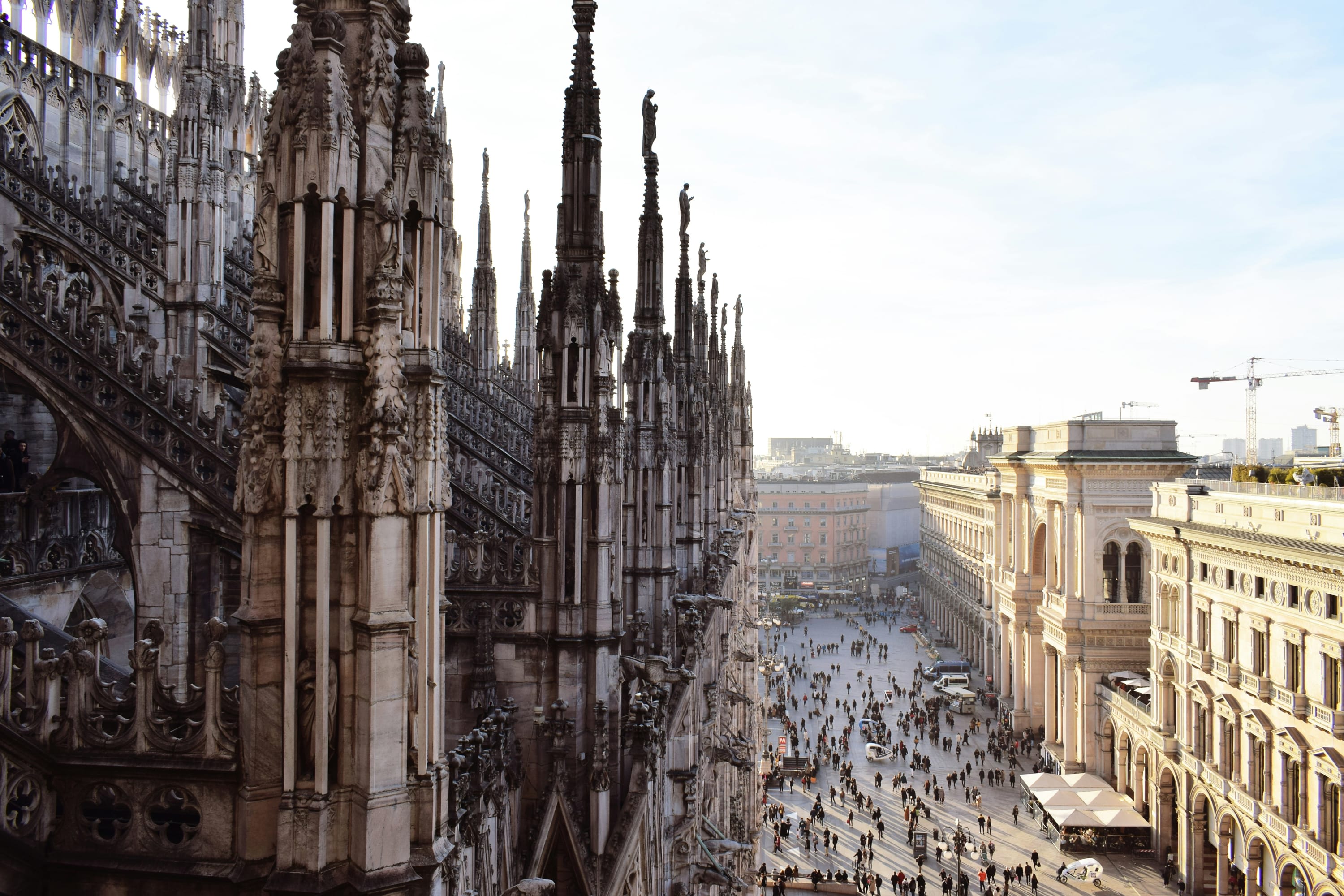
Our Fora Advisors ventured out of Brera and Quadriltero d’Oro into the heart of Milan’s historic center to take in Milan’s most celebrated cultural sites.
Duomo di Milano and the Duomo Plaza
The Duomo di Milano — or simply, the Duomo — is a Gothic masterpiece, and one of the largest cathedrals in the world. Thousands of statues, spires and gargoyles adorn its intricate façade. If you climb to the rooftop terraces, you’ll catch panoramic views of the city, and on a clear day, the distant Alps. The cathedral dates back to the 1300s, and was completed in the 1960s. If you take a tour, your guide will highlight the tangible differences in architecture and design over its six centuries of construction.
“When I think of Milan, I immediately envision chic Italian fashion — and the iconic Duomo di Milano,” Fora Advisor Michelle Oliveiro said.
Historical buildings, famous shops and eateries flank the surrounding plaza, Piazza del Duomo, which is the literal center of Milan. It bustles with locals and travelers all year.
Related guide: Discover Milan: A Cultural Odyssey through Italy's Fashion Capital
Parco Sempione: Castello Sforzesco and the Arco della Pace
Parco Sempione is Milan's beloved city park, home to impressive historic landmarks. Among the most notable: Castello Sforzesco, a historic fortress and the former residence of the Sforza dukes. Today, it’s home to a museum and art collections, including works by Michelangelo and Leonardo da Vinci. Fora Advisor Ashley Emala recommended visiting Sforzesco Castle at sundown so you can catch the lighting of the city park lights from the old fortress’ walls. Meanwhile, the Arco della Pace (Arch of Peace) is a neoclassical triumphal arch that adds a touch of grandeur to the well-manicured park. Strolling through the greenery offers a break from Milan’s busy streets.
Galleria Vittorio Emanuele II
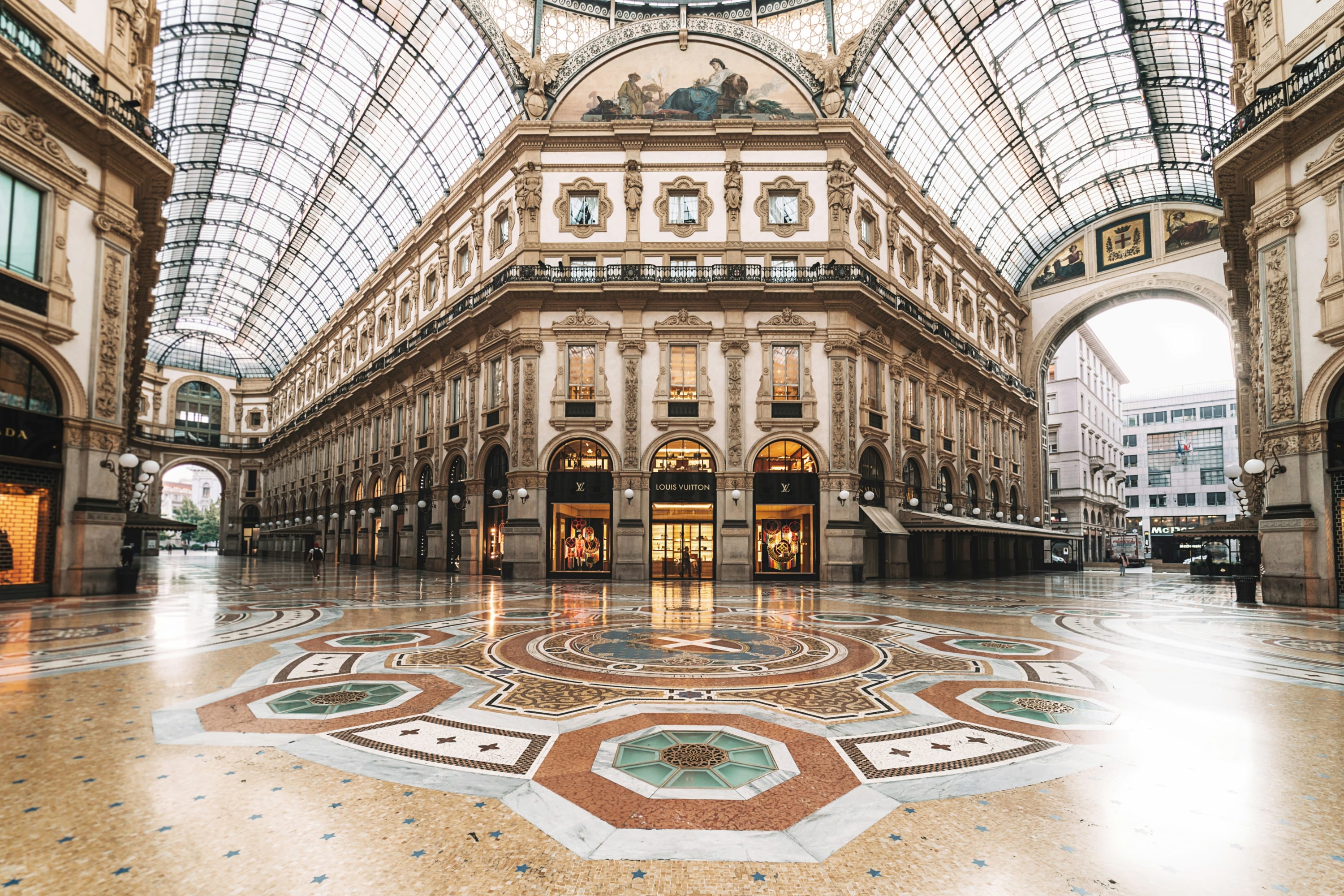
Galleria Vittorio Emanuele II, sometimes called Milan’s “living room,” is one of the world’s oldest and most impressive shopping arcades. Its grand, glass-vaulted ceilings, intricate mosaics and elegant ironwork cultivate a glamorous setting filled with luxe boutiques and historic cafés that serve a mix of local and international cuisine. Fora Advisor Bekah LeBeau noted that the Galleria is a far cry from a typical shopping mall experience, describing the architecture as “stunning” and highlighting the venue as an excellent addition to your Milan shopping itinerary.
The Bone Church and the “miracle” at Santa Maria presso San Satiro
San Bernardino alle Ossa is an unusual site among Milan’s most interesting landmarks. The Bone Church is no misnomer; the walls and altars of the church are adorned with human bones arranged in intricate patterns. This display dates back to the 1200s, when bones were placed here as a form of reverent decoration since the cemeteries were overcrowded.
“The Bone Church offers a bit of creepy, cool history with its walls covered in human bones — a somber reminder of Milan’s plagues,” Fora Advisor Wendy Wallace said. “Adults will appreciate its beauty; kids its macabre.”
Nearby, Santa Maria presso San Satiro — another Catholic church — is celebrated for its remarkable trompe-l'œil, or optical illusion, designed by Renaissance architect Donato Bramante. The church’s interior features what appears to be a deep semicircular recess behind the altar, but it’s a shallow space created to appear much deeper than it actually is. Even if you’re not interested in architecture, the design makes for a worthy stop on any Milan itinerary.
See “The Last Supper” at Santa Maria delle Grazie
Leonardo da Vinci is one of history’s most celebrated figures, and “The Last Supper" is one of his most pivotal works. The painting can still be found in its original setting, the Santa Maria delle Grazie basilica, in Centro Storico. Only a few people are allowed to see the painting in its exhibit at a time; the viewing experience is intimate and unrushed.
Day 3: Navigli
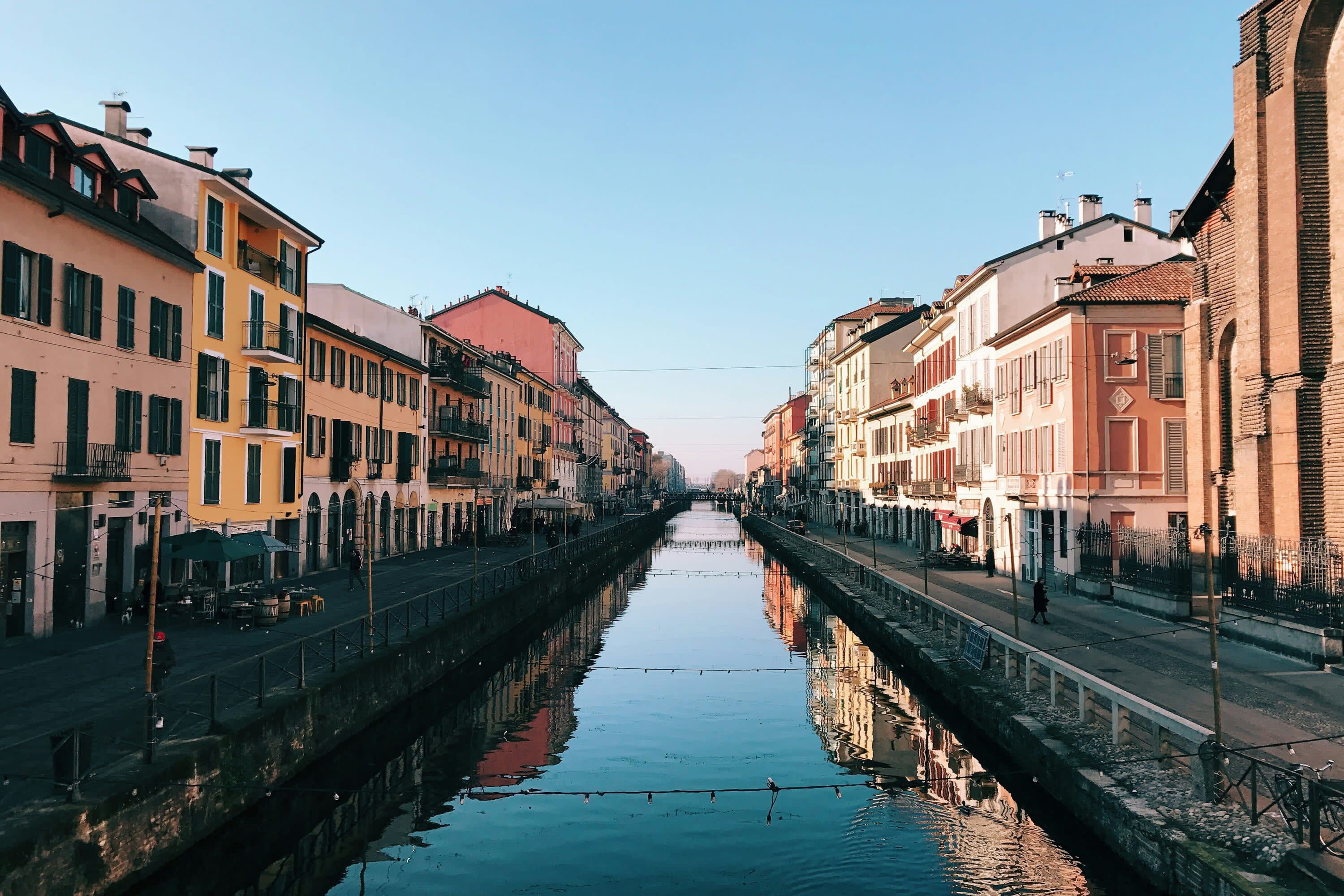
The neighborhood is one of Milan's hippest districts, known for its scenic canals, lively nightlife and artful vibe. You can stroll along the canals lined with colorful buildings, browse indie art galleries and boutiques and enjoy an array of restaurants, cafés and bars with canal-side seating. By day, the atmosphere is laid-back, but as evening approaches, the area comes alive with everything from cozy wine bars to bumping clubs. Navigli is one of the best places to experience Milan’s nightlife, as is Via Tortona, the site of Milan’s annual Design Week.
The Fora team only spent two days in Milan on their scouting trip. But many other advisors have visited the city, recommending a pitstop in Navigli and nearby Via Tortona — if only for a canalside aperitivo. Alternatively, if you time your visit right, the monthly Mercatone dell'Antiquariato, a large antique market that draws locals and visitors from all over Europe, is another worthy highlight.
What to do in Milan: More recommendations
If you still find yourself wondering what else to do in Milan, here are a few additional recommendations.
Enjoy Milanese bistros and café culture
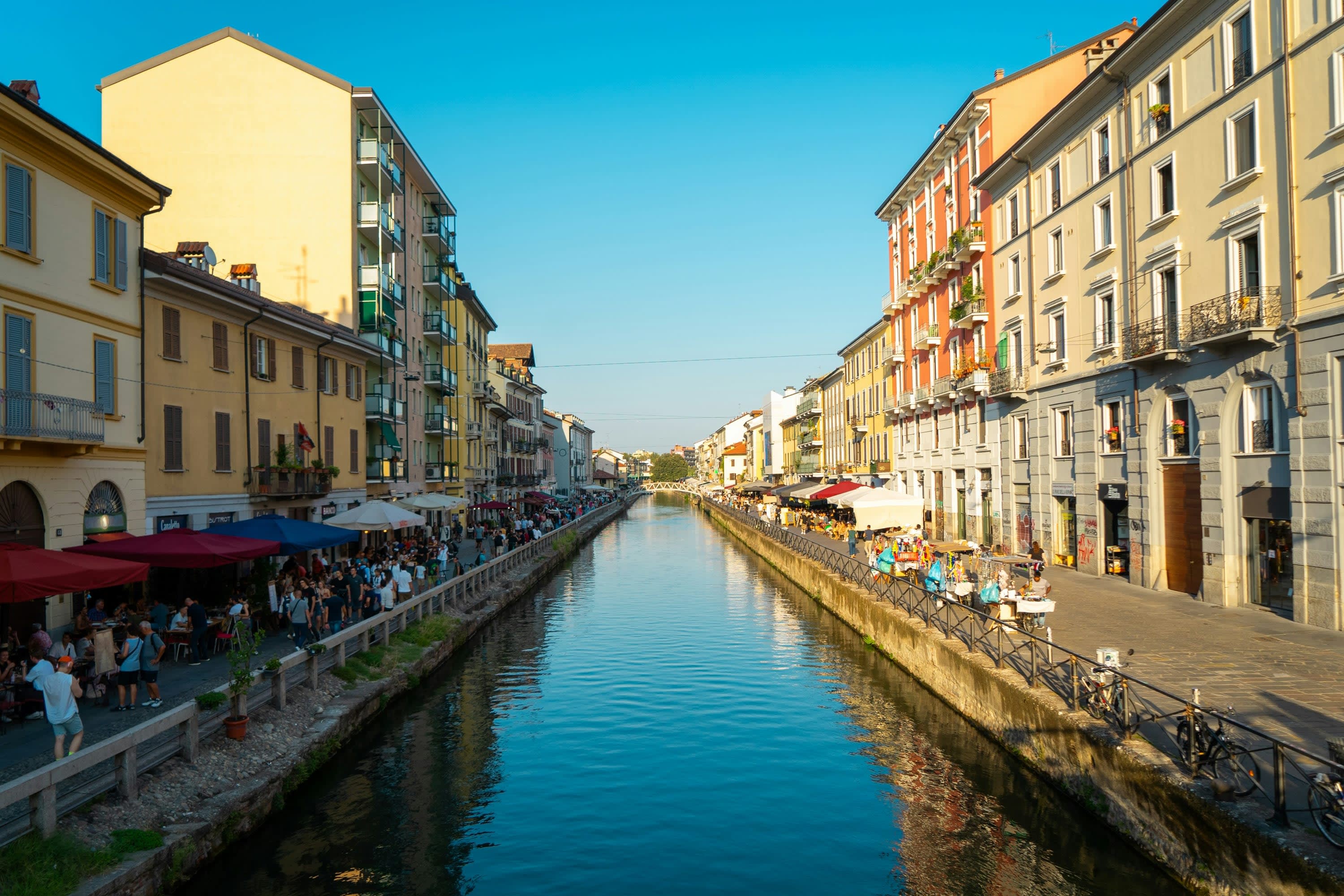
You can’t visit Milan without experiencing its bistros and cafés, whether it’s a cozy corner for an espresso or a stylish spot for aperitivo. From traditional trattorias serving Milanese risotto to contemporary cafés with artisanal pastries, Milan’s café culture combines tradition and trendiness. Savoring a meal or drink here often comes with people-watching and enjoying the buzz of the city’s streets.
Fora Advisor Michelle Oliveira shared a tip: “If you're accustomed to Southern Italian food, it’s important to note that Northern Italian cuisine offers a different culinary experience.”
Notably, the former is much more prominent in the United States, while the latter is typically reserved for upscale eateries stateside. Michelle added that in Milan, dishes highlight local ingredients. Expect delights like creamy risottos, tender veal and beef tartare.
“Embrace the unique flavors and techniques that define this region's gastronomy for a truly memorable dining experience,” she said.
Related guides: Restaurants and Cafés Worth Adding to Your Milan Itinerary and Local Food & Culture in Milan
Teatro alla Scala
Teatro alla Scala in Milan is one of the most prestigious opera houses in the world. It has hosted legendary performances since the late 18th century. The grandeur of its red velvet interior and golden balconies offers an unforgettable setting for opera, ballet and classical concerts, which still have regular showings today. You can also explore the theater’s museum, which houses artifacts from Italy’s musical history.
Triennale di Milano
The Triennale di Milano, another addition to Parco Sempione, is a contemporary hub for Italian design, art and architecture. The site hosts an ever-changing lineup of innovative exhibits that explore everything from fashion to industrial design.
Villa Necchi Campiglio
Villa Necchi Campiglio is a rare gem of Italian Modernist architecture. Originally a private home, it’s now a museum that offers a glimpse into the lifestyle of Milan’s upper class in the early 20th century, complete with original furnishings and artwork. The surrounding gardens and pool make it a peaceful retreat in the heart of the city. (Exploring historic villas is also one of the top things to do in Lake Como, which is less than an hour from Milan.)
Plan your Milan itinerary with a Fora Advisor
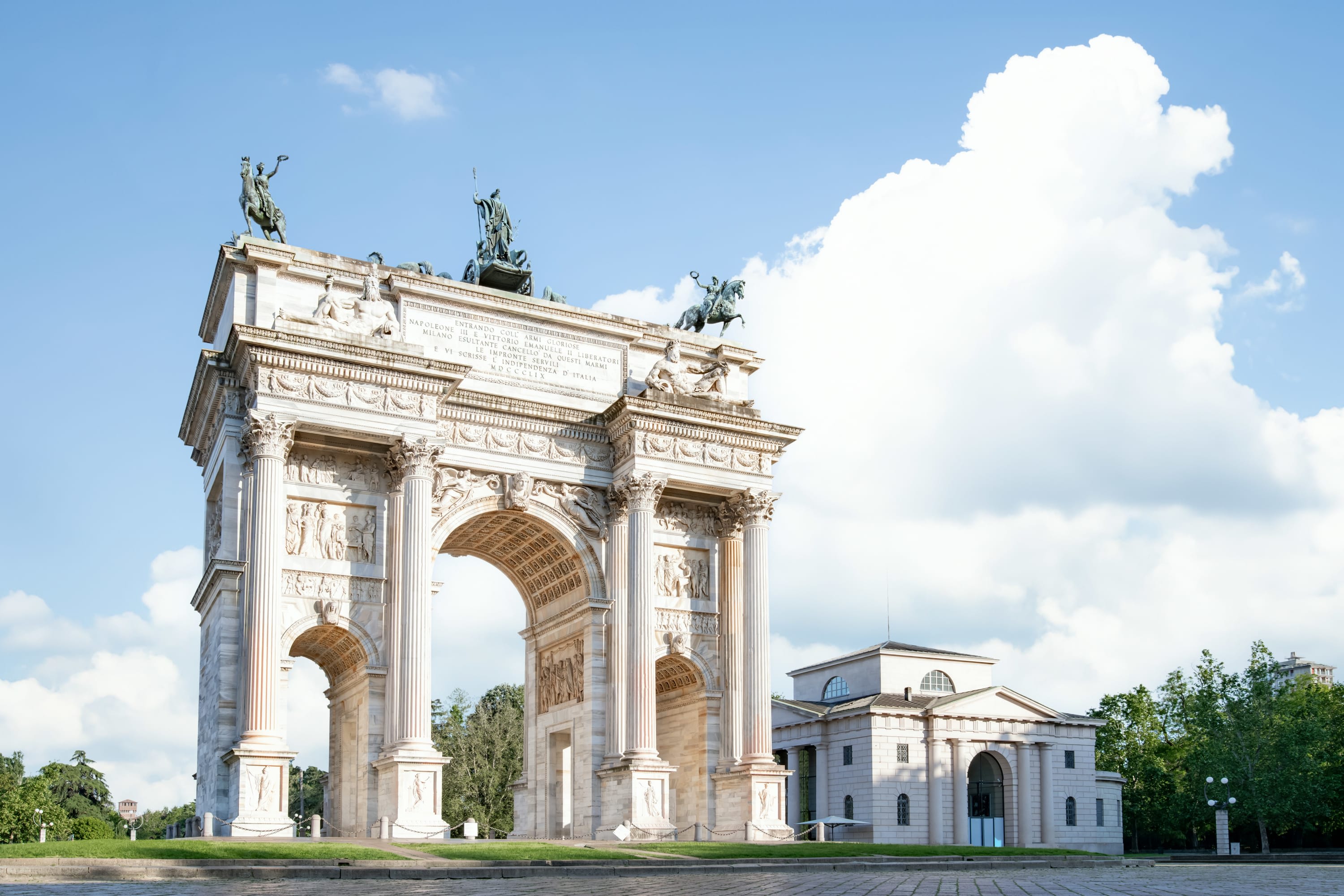
For expert help deciding what to do in Milan, chat with a Fora Advisor. They’ll build a custom itinerary for you based on your interests and budget, and can connect you with trusted tour guides on the ground. Your advisor can also help you determine where to stay in Milan and unlock complimentary hotel perks at properties all over the city.
What to do in Milan and related travel FAQs
Below, we’ve answered a few common questions about things to do in Milan.
Is three days enough to see all of Milan?
Three days certainly gives you enough time to see most of Milan’s highlights. However, there’s enough to do here if you’re looking for a longer vacation. Alternatively, many travelers pair a trip to urban Milan with a segue to the Italian Lakes, like Lake Como and Lake Garda.
Related guides: Milan Stopover: A 24 Hour Itinerary and Milan Escape: Unveiling the City in Two Days
What should you not miss in Milan? What’s the city best known for?
Few cities in Europe, let alone Italy, compare to Milan’s fashion and design scene. Many renowned designers and fashion brands — from Versace to Prada — got their start here. The city also boasts impressive Renaissance-era architecture and an excellent foodie scene.
“The fashion in Milan is unlike anywhere I've experienced in the world,” Fora Advisor Bekah LeBeau said.
What are the best months to visit Milan?
The Fora Advisors who visited Milan during the scouting trip noted that Milan is a year-round destination. However, spring and fall may be best overall times to visit; the weather is mild and comfortable — ideal for dining outdoors (an Italian urban tradition) and exploring Milan’s neighborhoods. These periods also tend to have fewer tourists than summer, when it’s hot.
One big caveat: Milan regularly hosts fashion and design events throughout the year. These events draw travelers from all over the world. If you’re looking for the best rates and smallest crowds, you should plan around these festivities. As always, a Fora Advisor will be happy to help with optimal timing.
Is Milan a walkable city? What’s the best way to get around?
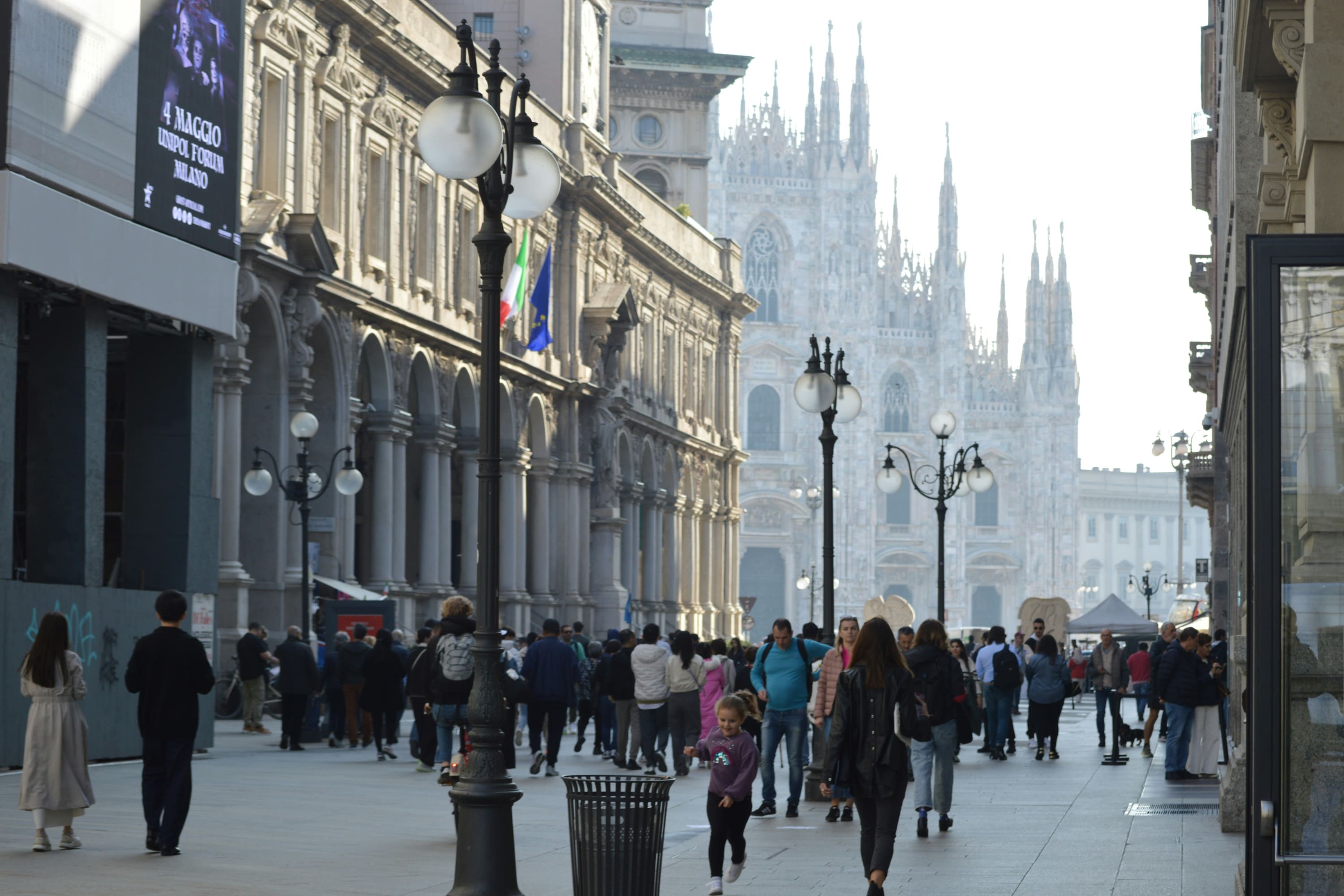
Milan is walkable and hosts an excellent public transportation system, especially in Centro Storico and the surrounding neighborhoods. Unless you’re planning to venture out of the city, you won’t need to rely on a rental car.
Is Milan friendly to tourists?
Yes. In fact, Milan is arguably Italy’s most cosmopolitan city. Petty property crime does occur, though; exercising normal travel precautions.
Is Milan an expensive destination?
Milan indeed has a reputation as an expensive, luxury destination. After all, many of the world’s most prominent fashion and design brands are based here. That said, casual accommodations, eateries and shopping can be found here. For example, the Central Station area hosts hotels with more approachable rates, and it’s still close to Centro Storico.
More Italy travel inspiration
Check out more Italy travel articles:
